-
Sale!
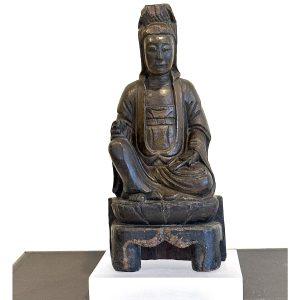
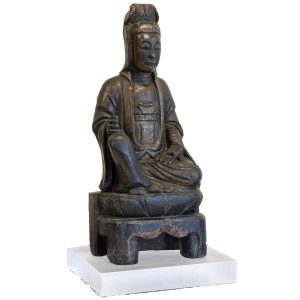
$525.00 Original price was: $525.00.$425.00Current price is: $425.00.
Ht: 10.75″ W: 5.5″ D: 4.5″ | FREE SHIPPING in continental u.s.!
This lacquer woodcarving is a Guanyin manifestation called “white hooded,” “white clad” or “white robed” Guanyin derived from the many paintings where she is clad in white. Although wood carvings usually portray her clothed in red, this finely carved version is covered in a lacquer coat that darkens naturally over time and darkens even more when honored on a home altar with daily prayers and offerings of smoky candles and burning incense.
-
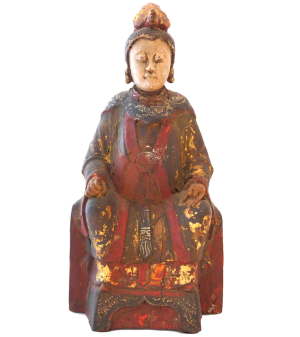
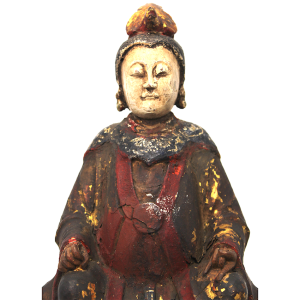
$585.00
H: 11.5” W: 5.375” D: 4.25” | FREE SHIPPING
The Queen Mother of the West is one of the most significant Taoist female deities and a patron deity of woman who still pray to her on her birthday for health and longevity.This charming image sits on a backless throne with decorated pedestal, her iconic phoenix in her crown. Her left hand is in karana mudra to cast out demons and negative energy. As it was consecrated it probably wasplaced on a home altar for personal devotion.
-
Sale!
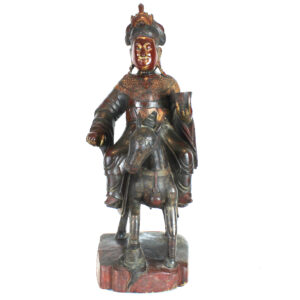
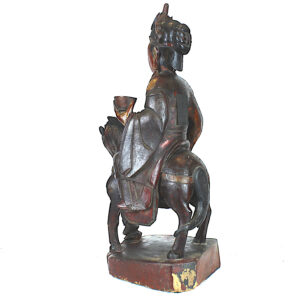
$3,750.00 Original price was: $3,750.00.$2,650.00Current price is: $2,650.00.
H: 22″ W: 8.25″ D:10″ | | CALL 213-568-3030 OR EMAIL VANISHINGARTS@GMAIL.COM FOR SHIPPING
Given its size and quality, this rare and exquisite Queen Mother of the West probably was placed in a local temple or village/family clan setting. She is the Taoist deity who grants immortality, is the patron deity of women, controls the length of lives, and cultivates of virtue. This magnificent carving portrays her on a horse with a magnificent headdress centered by her iconic striking phoenix holding a cup with the elixir of immortality
-
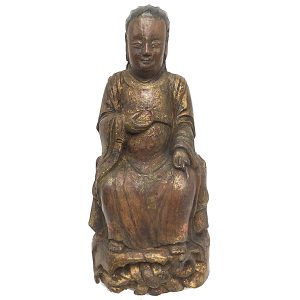
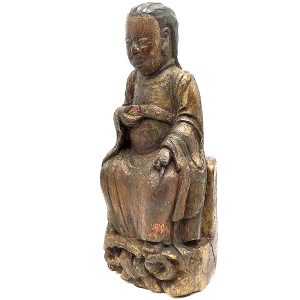
$595.00
H: 12” W: 5.625” D: 4” | FREE SHIPPING!
This charming and rare provincial carving represents the Emperor Zhenwu known as True Warrior or Perfected Warrior who is one of the most revered Chinese Taoist figures, venerated for his military skill and his ability to heal and protect his country. Although he generally sits on a throne with a snake under his right foot and a tortoise under his left, here his left foot rests on the tortoise’s back entwined by a snake. Covered in gilt, he wears a plain official’s robe rather than military garb, and holds a jade belt, a portrayal often mistaken as a simple official. His long black flows down his back, covering and surrounding the rear cavity.
-
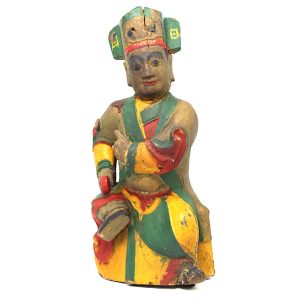
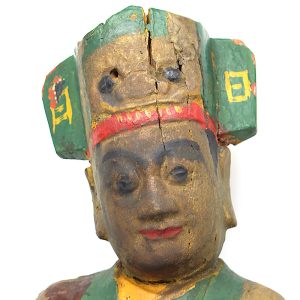
$395.00
H: 13.625” W: 7” D: 5.5” | FREE SHIPPING!
This vibrant carving of a Taoist priest or shaman is in religious attire with double-winged high hat centered with an image of a taotie. Two fingers of hisleft hand are in karana mudra to cast our evil spirits and the tael or silver ingot in his right hand represents a wish for wealth. The closed cavity and the inscription on the back indicate it was consecrated by a Taoist priest.
End of content
End of content










